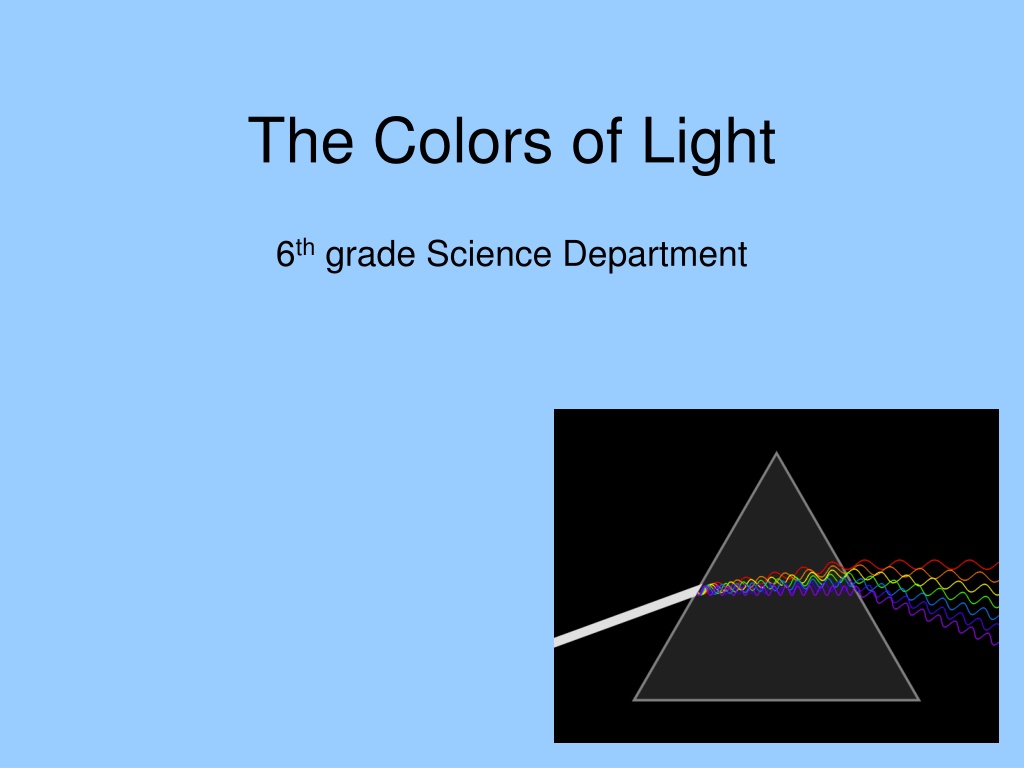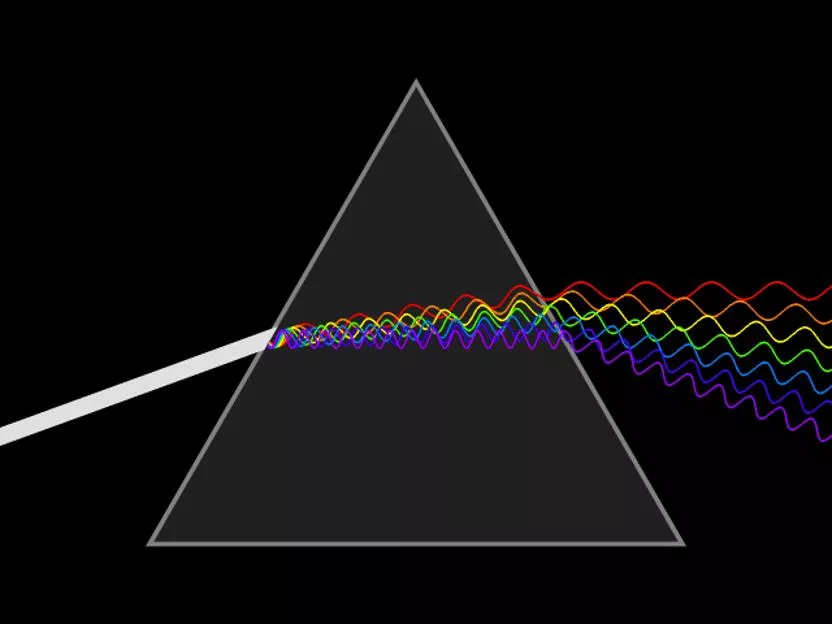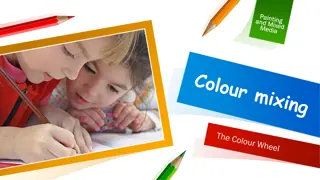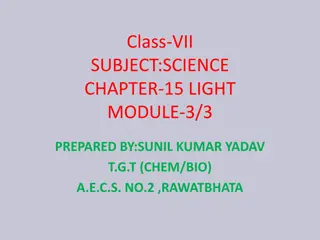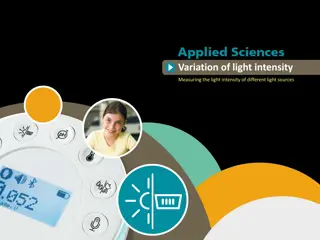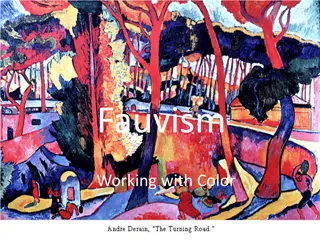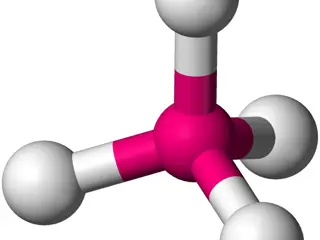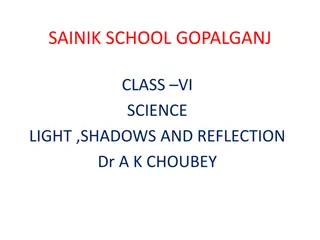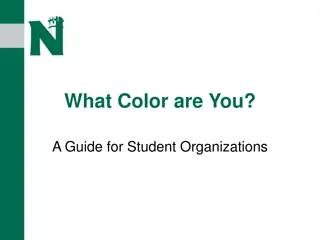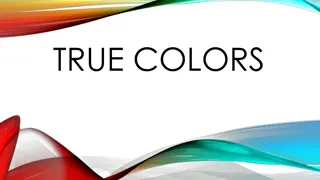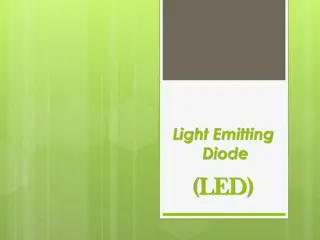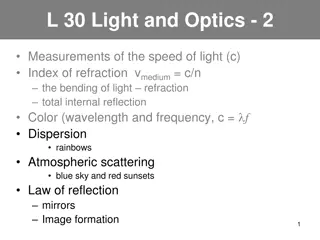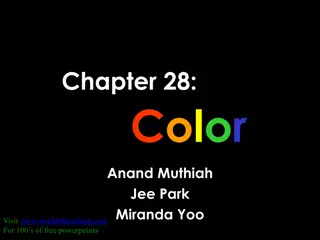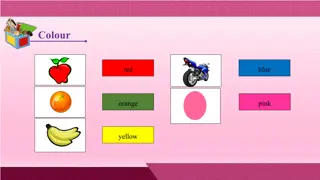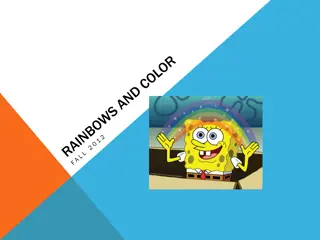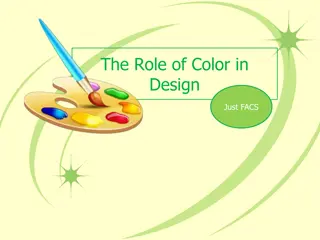The Colors of Light in Science
Dive into the world of light and color with insights on prisms, white light, primary colors, and the electromagnetic spectrum. Understand how wavelengths determine the color of objects and learn about reflection and absorption of visible light.
Download Presentation

Please find below an Image/Link to download the presentation.
The content on the website is provided AS IS for your information and personal use only. It may not be sold, licensed, or shared on other websites without obtaining consent from the author.If you encounter any issues during the download, it is possible that the publisher has removed the file from their server.
You are allowed to download the files provided on this website for personal or commercial use, subject to the condition that they are used lawfully. All files are the property of their respective owners.
The content on the website is provided AS IS for your information and personal use only. It may not be sold, licensed, or shared on other websites without obtaining consent from the author.
E N D
Presentation Transcript
The Colors of Light 6thgrade Science Department
Light Prisms These are a tool that use refraction to spread out the different wavelengths which make up white light
White Light White light is all the colors of visible light combined together This diagram demonstrates white light entering a prism and separating all the colors of light.
Colors of Light Each wavelength creates a different color (This means that each color of light bends at a different angle) Two factors determine the color of an object: Wavelengths that the object reflects/absorbs -- Wavelengths present in light that shines on object
Primary Colors of Light Three colors of light produce all the colors Red Green Blue
Electromagnetic Spectrum The range of all electromagnetic frequencies Usually represented in a diagram
Visible Light The part of the electromagnetic spectrum that human eyes can see Longest wavelengths are red and the shortest are violet
ROY G BIV The 7 colors of visible light are Red Orange Yellow Green Blue Indigo violet
Reflection & Absorption Visible light can either be reflected or absorbed 1. If it is reflected then the wave bounces back after striking the object 2. If it is absorbed then the wave is taken in by the object and its energy is changed to something new
